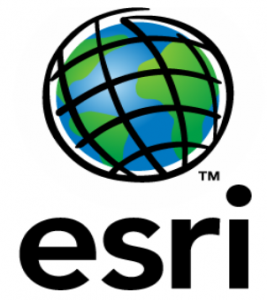What is GIS?
A geographic information system (GIS) is a framework for gathering, managing, and analyzing data. Rooted in the science of geography, GIS integrates many types of data. It analyzes spatial location and organizes layers of information into visualizations using maps and 3D scenes. With this unique capability, GIS reveals deeper insights into data, such as patterns, relationships, and situations—helping users make smarter decisions.
From Esri
Selected Books
-
Citizen Empowered Mapping by
ISBN: 9783319516288Publication Date: 2017-06-08 -
GIS in Action by
ISBN: 9781119227373Publication Date: 2017-03-01 -
Geographic Information by
ISBN: 9783319227894Publication Date: 2016-11-02 -
Principles of Applied Remote Sensing by
ISBN: 9783319225609Publication Date: 2016-01-04 -
Mapping and Modeling Weather and Climate with GIS by
ISBN: 9781589483767Publication Date: 2015-02-16 -
The Abstract Machine by
ISBN: 9781589483682Publication Date: 2015-02-01 -
GIS Research Methods by
ISBN: 9781589483781Publication Date: 2015-05-01 -
Lining up Data in ArcGIS by
ISBN: 9781589483422Publication Date: 2013-02-18 -
GIS and Cartographic Modeling by
ISBN: 9781589483095Publication Date: 2012-10-05 -
Analyzing Urban Poverty by
ISBN: 9781589481510Publication Date: 2008-02-01
GIS Showcase
From Esri
GIS Software & Tools

ArcGIS is the leading GIS software for working with maps and geographic information. It is currently available in the GIS Lab, but OWU has a campus license to the software. ArcGIS software (from ESRI) is available for installation and use by all faculty, staff, and students at OWU. To use the software, request an OWU ArcGIS Online account from John Krygier in the Department of Environment and Sustainability. OWU’s site license for all ESRI software is managed through an ArcGIS Online account. Please contact Informative Services with any technical problems.
ArcGIS Online runs on any browser and provides a broad range of GIS functions without having to install any files on desktop computers. ArcGIS Online is particularly strong for developing GIS apps to share information on the web and collect spatial data in the field.
- Request an ArcGIS Online account (Krygier), and log into the account.
- Under your name and account information (upper right), select Training.
- Search ArcGIS Online, and review ArcGIS Online Basics.
ArcGIS Pro runs on Windows desktop and can be installed from files supplied by Krygier or Information Services. ArcGIS Pro is intended for sophisticated geospatial data analysis.
- Request an ArcGIS Online account (Krygier), and log into the account.
- Download ArcGIS Pro install files, and install them on an appropriate computer.
- Under your name and account information (upper right), select Training.
- Search ArcGIS Pro, and review ArcGIS Pro Basics.

QGIS: free and open source GIS software
![]()
GRASS GIS: free GIS software
What is Geospatial Data?
The word geospatial is used to indicate that data that has a geographic component to it. This means that the records in a dataset have locational information tied to them such as geographic data in the form of coordinates, address, city, or ZIP code. GIS data is a form of geospatial data. Other geospatial data can originate from GPS data, satellite imagery, and geotagging.
From GIS Lounge
Selected Websites
Data.gov: Federal, state, and local data repository for the United States on many different subjects.
Environmental Protection Agency (EPA) Environmental Dataset Gateway: Environmental science data catalog for the United States.
Global Biodiversity Information Facility (GBIF): Biological and ecological data from many different institutions throughout the world.
Great Lakes Aquatic Habitat Framework: Spatial framework and database for Great Lakes ecological data.
International Union for the Conservation of Nature (IUCN) Red List of Threatened Species: Global inventory of species conservation status and other spatial data.
National Aeronautics and Space Administration (NASA) Open Data Portal: Catalog of NASA datasets and other aerospace and earth science data.
National Oceanic and Atmospheric Administration (NOAA) Data Discovery Portal: Catalog of NOAA datasets and other aquatic and marine science data.
National Weather Service GIS Portal: Weather datasets from the National Weather Service for the United States.
United States Geological Survey (USGS) Earth Explorer: Satellite and aerial remote sensing data from the USGS.
United States Geological Survey (USGS) Science Data Catalog: Geological and environmental sciences data catalog from the USGS.

 Click to chat online now
Click to chat online now Chat is offline
Chat is offline

